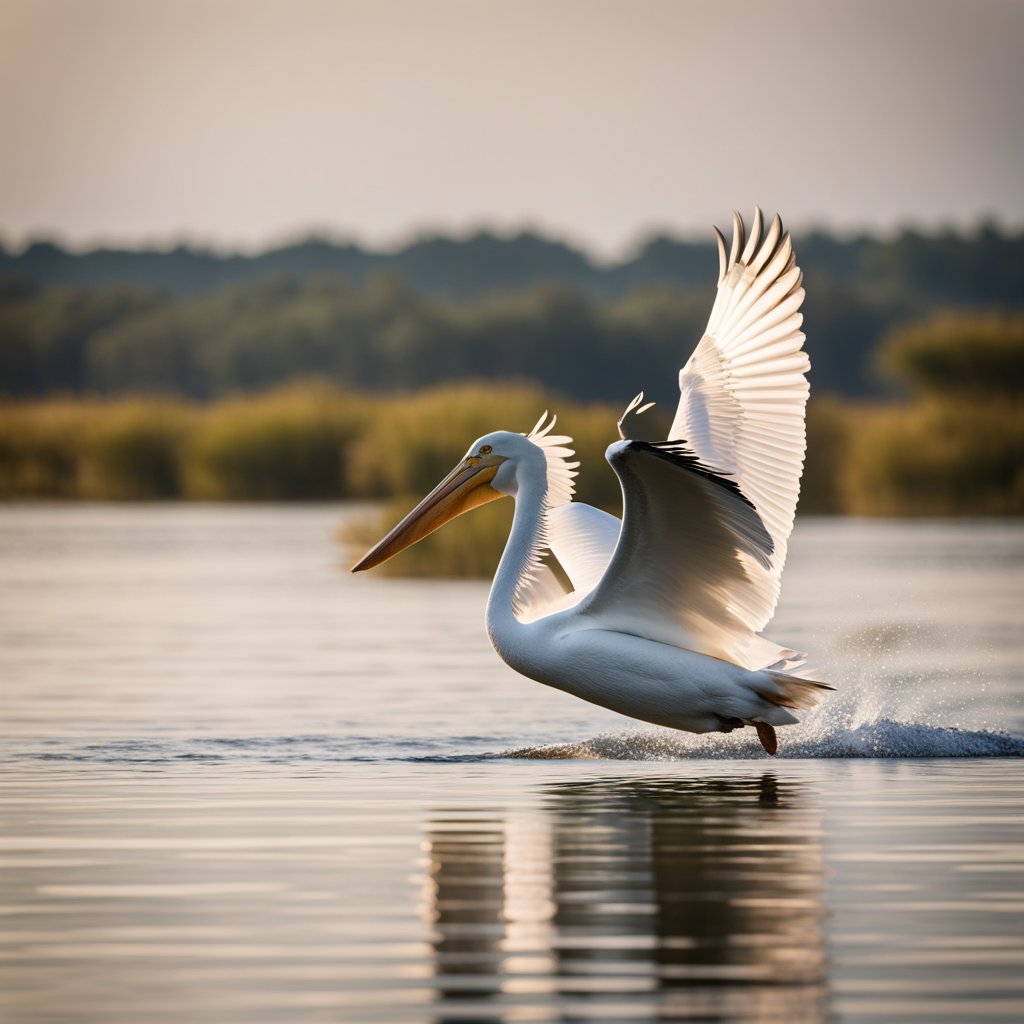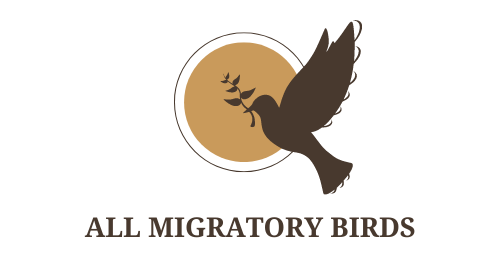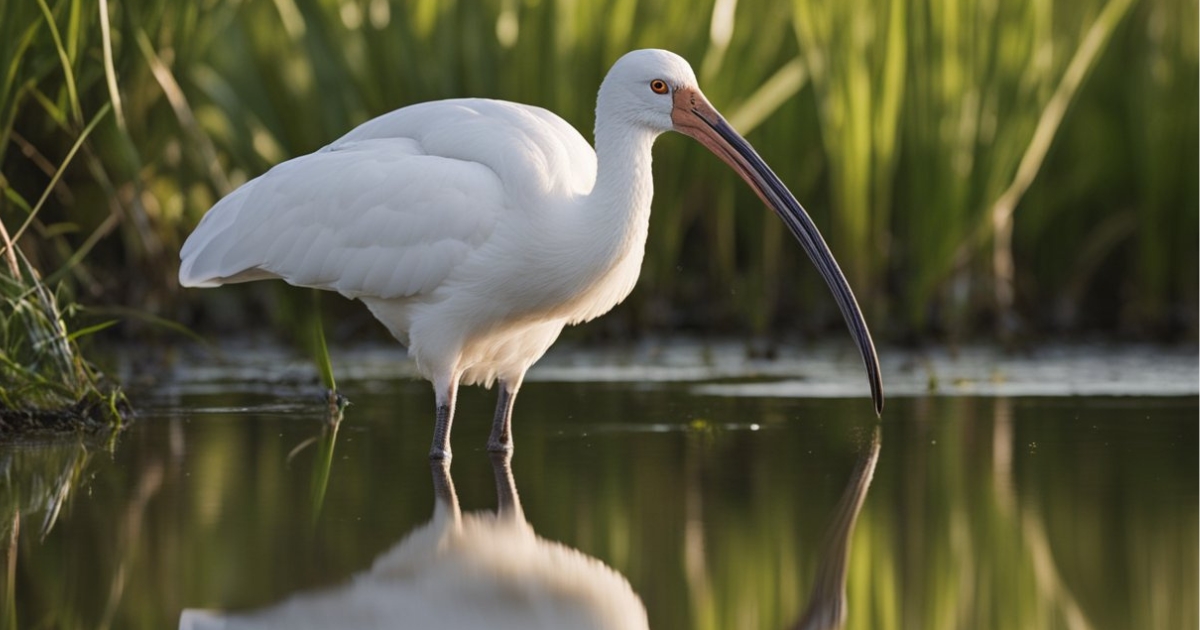Florida is a paradise for birdwatchers, especially when it comes to spotting stunning white birds. From the elegant Great Egret to the majestic Whooping Crane, the Sunshine State is home to a diverse array of avian species that grace its wetlands, marshes, and coastal areas. If you ever wondered what are the white birds in Florida, you’re in for a treat. In this article, we will explore 30 incredible white birds you can spot across Florida’s beautiful landscapes. Each of these species plays a unique role in the ecosystem, and knowing about them can enhance your appreciation for Florida’s wildlife.
30 White Birds You Can Spot in Florida
Great Egret

The Great Egret is one of the most iconic white birds in Florida, easily recognizable by its long neck and striking yellow bill. These large wading birds can often be seen in shallow waters, where they hunt for fish, crustaceans, and insects. During the breeding season, they develop long, elegant plumes that trail behind them, making them a favorite among photographers. The Great Egret is not just a pretty face; it plays a crucial role in maintaining the balance of wetland ecosystems by controlling fish populations.
Herons
Herons are a diverse group of birds that include several white species, such as the Great Blue Heron and the Little Blue Heron. While not all herons are white, many can be spotted in Florida’s wetlands. They are known for their long legs and necks, which allow them to wade through water while hunting for prey. Herons are patient hunters, often standing still for long periods before striking at fish or amphibians.
American White Ibis
The American White Ibis is a striking bird with a long, curved bill, perfect for probing mud and shallow waters for food. These birds are often seen in flocks, wading through wetlands in search of crustaceans and insects. Their distinctive appearance, combined with their social behavior, makes them a joy to observe. During the breeding season, their feathers can take on a slightly reddish hue, adding to their charm.
Snowy Egret

The Snowy Egret is a small, elegant bird known for its striking white plumage and black legs. It often forages in shallow waters, using its quick, agile movements to catch small fish and invertebrates. The Snowy Egret’s yellow feet are particularly distinctive and help it in hunting by stirring up mud. This bird is a true symbol of Florida’s wetlands, showcasing the beauty and diversity of the state’s avian life.
Bubulcus (Cattle Egret)
The Cattle Egret, or Bubulcus ibis, is a unique white bird often found in fields and pastures rather than wetlands. These birds are known for their symbiotic relationship with livestock, following them around to catch insects disturbed by grazing animals. During the breeding season, they develop colorful plumage that contrasts beautifully with their white bodies, making them a fascinating sight.
American White Pelican

The American White Pelican is a large bird with a massive wingspan and distinctive bill. Unlike its brown counterpart, this pelican is primarily white, with black wing tips visible in flight. They are often seen gliding over lakes and coastal waters, where they fish in groups. Their cooperative hunting techniques, where they form a circle to herd fish, are a sight to behold.
Wood Stork
The Wood Stork is a large, wading bird that is easily recognizable by its long, curved bill and bald head. These birds are often found in shallow waters, where they forage for fish and crustaceans. Wood Storks are social birds, often nesting in colonies, and their presence is a good indicator of healthy wetland habitats. Conservation efforts have been crucial in preserving their populations, as they were once endangered.
Little Egret
The Little Egret is a smaller relative of the Snowy Egret, known for its graceful appearance and slender build. These birds can often be seen wading in shallow waters, hunting for fish and small invertebrates. Their striking white feathers and black legs make them a beautiful sight in Florida’s wetlands. Little Egrets are also known for their agile hunting techniques, often using their long bills to probe the mud for food.
Cattle Egret
Cattle Egrets are often found in agricultural areas, where they follow livestock to catch insects disturbed by grazing. They are a fascinating example of how wildlife adapts to human environments. These birds are primarily white but can show a slight coloration during breeding season. Their presence in fields and pastures makes them a common sight throughout Florida.
Whooping Crane

The Whooping Crane is one of the tallest birds in North America and is known for its impressive wingspan. These magnificent birds are primarily white with black accents on their heads and wings. They are a conservation success story, having been brought back from the brink of extinction. Whooping Cranes can often be seen in wetlands, where they forage for food and display their graceful courtship dances.
White-Tailed Kite
The White-Tailed Kite is a striking bird of prey that can be found in open fields and marshy areas. With its white body and distinctive black shoulder patches, this bird is a beautiful sight as it hovers over the ground searching for small mammals and insects. Their hunting technique involves a unique hovering flight, making them stand out among other birds of prey.
Ring-Billed Gull
While not entirely white, the Ring-Billed Gull is a common sight along Florida’s coastlines. These medium-sized gulls have a distinctive black ring around their bills and can often be seen scavenging for food or resting on sandy beaches. They are opportunistic feeders, taking advantage of the abundant food sources found in coastal areas.
Mute Swan
The Mute Swan is an elegant bird often seen gliding gracefully across lakes and ponds. With its long neck and striking white plumage, it’s a favorite among birdwatchers. Mute Swans are known for their territorial behavior, especially during the breeding season, when they fiercely protect their nests. They primarily feed on aquatic vegetation, making them an integral part of wetland ecosystems.
Snow Goose
The Snow Goose is a migratory bird that can occasionally be spotted in Florida during the winter months. These birds are primarily white, with black wing tips and a distinctive pink bill. They are often seen in large flocks, foraging in fields and wetlands for grains and other food sources. Their migratory patterns make them a fascinating species to observe.
Reddish Egret (White Morph)
The Reddish Egret comes in two color phases: reddish and white. The white morph is particularly striking, with its elegant stature and fishing prowess. These birds are known for their unique hunting style, often dancing and flapping their wings to scare fish into shallow waters. Their presence in Florida’s coastal areas is a testament to the state’s rich avian diversity.
Ross’s Goose
Similar to the Snow Goose, the Ross’s Goose is a smaller, white bird that can be spotted during migration. They have a more rounded head and a shorter neck compared to their Snow Goose cousins. Ross’s Geese are often seen in flocks, typically foraging in agricultural fields and wetlands. Their migratory patterns bring them to Florida during the winter months, where they can be observed feeding on grains and other vegetation. Spotting a Ross’s Goose among the larger Snow Geese can be quite a treat for birdwatchers.
Sternidae (Terns, Several Species Are White)
The family Sternidae includes several species of terns that are predominantly white. Common terns, Forster’s terns, and Royal terns are just a few examples you might encounter along Florida’s coastlines. These agile flyers are known for their graceful aerial displays and diving skills as they hunt for fish. Terns often nest in colonies, making them social birds that add vibrancy to coastal ecosystems. Their striking white plumage, combined with their black caps during the breeding season, makes them a delightful sight against the blue sky.
Black-Crowned Night Heron (Juvenile and Some Adult Phases)
While adult Black-Crowned Night Herons are not entirely white, their juvenile counterparts exhibit a more muted, pale coloration that can sometimes appear white. These birds are primarily nocturnal, making them a unique addition to Florida’s birdwatching scene. They can often be found in marshy areas, where they hunt for fish and amphibians under the cover of darkness. Their adaptability to different habitats and feeding behaviors makes them a fascinating species to observe.
Masked Booby
The Masked Booby is a seabird that can be spotted along Florida’s coastal regions. While primarily white, it features a distinctive black mask that gives it its name. These birds are known for their impressive diving skills, plunging into the water to catch fish. They are often seen nesting on remote islands, where they raise their young in colonies. The sight of a Masked Booby in flight is a reminder of the diverse bird species that inhabit Florida’s coastal ecosystems.
White-Tailed Tropicbird
The White-Tailed Tropicbird is another stunning seabird that can occasionally be seen along Florida’s shores. With its long, elegant tail feathers and striking white plumage, it is a real showstopper. These birds are known for their aerial acrobatics, often performing impressive dives to catch fish. While they are more commonly found in tropical regions, their occasional visits to Florida make them a special treat for birdwatchers.
Eudocimus (White Ibis Genus)
The genus Eudocimus includes the American White Ibis and the White-Faced Ibis. These birds are characterized by their long, curved bills, which they use to probe mud and shallow waters for food. The American White Ibis, as mentioned earlier, is a common sight in Florida’s wetlands, while the White-Faced Ibis can be found in more marshy areas. Both species play important roles in their ecosystems, helping to control insect populations and maintain healthy wetland habitats.
Royal Tern
The Royal Tern is a large, elegant tern that can be seen along Florida’s coastlines. With its striking white body and long, slender wings, this bird is a master of the skies. Royal Terns are known for their distinctive black caps during the breeding season and their impressive diving skills as they hunt for fish. They often nest in colonies, making them a social species that adds vibrancy to coastal ecosystems.
Forster’s Tern
Forster’s Tern is another species from the Sternidae family, easily recognizable by its white plumage and distinctive black cap. These birds are often seen hunting along the edges of wetlands and coastal areas, using their sharp eyesight to spot fish from above. Forster’s Terns are known for their graceful flight and are a joy to watch as they dive into the water to catch their prey.
Ardea Herodias Occidentalis (Great White Heron)
The Great White Heron is a subspecies of the Great Blue Heron, known for its all-white plumage. These majestic birds are primarily found in Florida’s coastal areas and are often seen hunting in shallow waters. The Great White Heron is a symbol of Florida’s rich biodiversity and plays an important role in the ecosystem by controlling fish populations. Their striking appearance and graceful movements make them a favorite among birdwatchers.
Northern Gannet (Juveniles Are Mostly White)
The Northern Gannet is a large seabird that can be spotted off Florida’s coast, particularly during migration. Juvenile Northern Gannets are mostly white, making them a beautiful sight as they glide over the water in search of fish. These birds are known for their impressive diving skills, plunging into the ocean to catch their prey. Their presence along Florida’s coast adds to the diversity of white birds that can be observed in the state.
White-Faced Ibis (White Phase)
The White-Faced Ibis, particularly in its white phase, is a striking bird that can be found in marshy areas of Florida. These birds have long, curved bills that they use to forage for food in shallow waters. The white phase of the White-Faced Ibis is a beautiful sight, showcasing their elegant form and unique coloration. Their adaptability to different habitats makes them an important species in Florida’s ecosystems.
Snowy Owl (Occasionally Seen in Winter)
While not a typical resident of Florida, the Snowy Owl can occasionally be spotted during the winter months. These large, white owls are known for their striking appearance and are often associated with colder climates. Their rare sightings in Florida create excitement among birdwatchers, as they are beautiful and elusive creatures. Snowy Owls primarily hunt small mammals, and their presence in Florida highlights the state’s diversity of bird species.
Bald Eagle (Adults with White Head and Tail)
The Bald Eagle is a national symbol and can be found throughout Florida, often nesting near large bodies of water. Adults are easily recognizable by their white heads and tails, contrasting sharply with their dark brown bodies. These majestic birds are powerful hunters, primarily feeding on fish. Their impressive nests and aerial displays make them a favorite among birdwatchers and nature enthusiasts.
Willet (Pale Winter Plumage)
The Willet is a large shorebird that can often be seen along Florida’s beaches and coastal wetlands. During the winter months, they sport a pale plumage that makes them a striking sight against the sandy shores. Willets are known for their distinctive calls and foraging behavior, often probing the mud for small invertebrates. Their presence adds to the rich tapestry of birdlife found in Florida.
White-Winged Dove
The White-Winged Dove is a common sight in urban areas and scrub habitats throughout Florida. While not entirely white, its distinctive white wing patches make it stand out among other dove species. These birds are known for their cooing calls and can often be seen foraging for seeds and fruits. Their adaptability to various environments makes them a beloved species among birdwatchers.
People Also Read:
FAQs
-
What types of habitats do white birds in Florida prefer?
White birds in Florida can be found in a variety of habitats, including wetlands, marshes, coastal areas, and even urban environments. Many species, such as egrets and ibises, thrive in shallow waters where they can forage for food.
-
Are all white birds in Florida migratory?
Not all white birds in Florida are migratory. While some, like the Snow Goose and certain terns, migrate seasonally, others, like the Great Egret and American White Ibis, are year-round residents.
-
What do white birds in Florida typically eat?
White birds in Florida have diverse diets, often consisting of fish, crustaceans, insects, and small mammals. Their feeding habits can vary significantly depending on the species and the availability of food in their habitats.
-
How can I attract white birds to my backyard?
To attract white birds to your backyard, consider creating a habitat that includes shallow water sources, native plants, and food sources such as seeds and fruits. Providing a safe environment will encourage them to visit.

